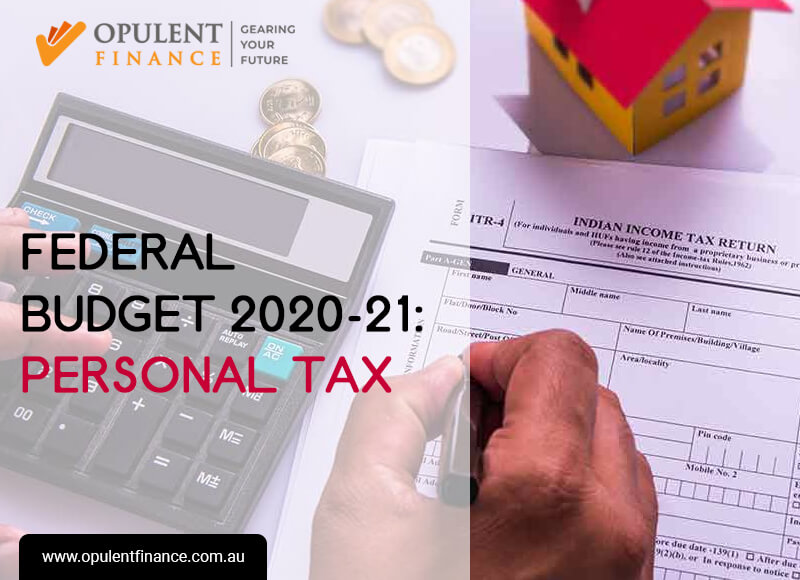Federal Budget 2020-21: Personal Tax

As expected, the Government has announced further tax relief for low and middle income earners building on last year’s Personal Income Tax Plan which is already legislated.
This relief is provided by way of:
- from 1 July 2018 until 30 June 2022, a significant increase in the Low and Middle Income Tax Offset (LMITO)
- from 1 July 2022, an increase in both the top threshold of the 19 per cent personal income tax bracket and an increase to the Low Income Tax Offset (LITO), and
- from 1 July 2024, a reduction in the 32.5 per cent marginal tax rate to 30 per cent.
Changes to personal income taxes
Low and Middle Income Tax Offset and Low Income Tax Offset
The new LMITO, which applies from 1 July 2018 until 30 June 2022, currently provides a tax offset of up to $530 per year in addition to the LITO (which is a maximum of $445).
The Government has announced its intention to increase the maximum amount of the LMITO to $1,080 per year, to be phased in as set out in Table 1 below. The first time that the benefit of this reduction in income tax will be received by affected taxpayers will be when they are assessed on their 2018-19 income tax return.
Table 1: Increase in Low and Middle Income Tax Offset for Australian tax residents
| Taxable Income ($) | Revised amount of the LMITO ($) |
| 37,000 or less | 255 |
| 37,001 to 48,000 | 255 plus 7.5 per cent of excess over 37,000 |
| 48,001 to 90,000 | 1,080 |
| 90,001 to 126,000 | 1,080 less 3.0 per cent of excess over 90,000 |
From 1 July 2022, the LITO and the LMITO will merge into a new LITO. The Government has announced in this year’s Budget that the maximum amount of this LITO will be increased from $645 (as currently legislated) to $700 per year, to be phased in as set out in Table 2 below.
Table 2: New Low Income Tax Offset for Australian tax residents
| Taxable Income ($) | Revised amount of the new LITO ($) |
| 37,500 or less | 700 |
| 37,501 to 45,000 | 700 less 5.0 per cent of excess over 37,500 |
| 45,001 to 66,667 | 325 less 1.5 per cent of excess over 45,000 |
Change to the personal income tax brackets
Under the already legislated Personal Income Tax Plan, gradual changes to the tax thresholds will occur to eventually remove the 37 per cent tax bracket and apply a 32.5 per cent tax rate to taxable income between $41,000 and $200,000 by 1 July 2024.
Additional tax threshold and marginal rate changes have now been announced, increasing the current top threshold of the 19 per cent tax bracket from $41,000 to $45,000 from 1 July 2022 and reducing the 32.5 per cent marginal tax rate to 30 per cent from 1 July 2024.
The following table summaries all of the relevant changes announced.
Table 3: Income tax rates for Australian tax residents
|
Rate (%) | Current Thresholds (from 1 July 2018) Income range ($) |
Thresholds from 1 July 2022 Income range ($) |
Thresholds from 1 July 2024 Income range ($) |
| Tax free | 0 – 18,200 | 0 – 18,200 | 0 – 18,200 |
| 19 | 18,201 – 37,000 | 18,201 – 45,000 | 18,201 – 45,000 |
| 30 | 45,001 – 200,000 | ||
| 32.5 | 37,001 – 90,000 | 45,001 – 120,000 | |
| 37 | 90,001 – 180,000 | 120,001 – 180,000 | |
| 45 | > 180,000 | > 180,000 | > 200,000 |
One-off Energy Assistance Payment
The Government will also make a one-off Energy Assistance Payment of $75 for singles and $62.50 for each member of a couple ($125 total) who are eligible for ‘qualifying payments’ as at 2 April 2019 and who are residents of Australia for tax purposes.
Qualifying payments include the Age Pension, Carer Payment, Disability Support Pension, Parenting Payment Single, the Veterans’ Service Pension and the Veterans’ Income Support Supplement, Veterans’ disability payments, War Widow(er)s Pension, and certain permanent impairment payments.
The payment will be exempt from income tax with first payments expected to be made automatically before 30 June 2019, subject to the passage of legislation.
Medicare levy
The Medicare levy low-income thresholds for singles, families and seniors and pensioners will increase from the 2018-19 income tax year as follows:
- Individuals $22,398 (increased from $21,980)
- Families $37,794 (increased from $37,089), with an additional $3,471 for each dependent child or student (increased from $3,406)
- Single seniors and pensioners $35,418 (increased from $34,758), and
- The family threshold for seniors and pensioners will be increased to $49,304 (increased from $48,385) plus $3,471 for each dependent child or student (increased from $3,406).







